As the world’s largest inactive volcanic caldera, the Ngorongoro Crater offers one of the best Tanzanian safari experiences. With its unparalleled density of wildlife and breathtaking landscapes, this natural wonder is known as Africa’s Garden of Eden.
Nestled below a heavily forested 600-metre volcanic rim is a wildlife wonderland that makes the three-hour drive from the town of Arusha worth your while.
In this complete guide to the Ngorongoro Crater, I cover when to go, how to get there, safari options and what animals you'll see.
Let's jump in.
My Quick Takeaways:
In a rush? Here's the Ngorongoro Crater in a nutshell:
Wildlife:
- Home to approximately 25,000 large animals, including the Big Five: black rhino, elephant, buffalo, lion, and leopard.
- High predator density; notable populations of hyenas, jackals, and cheetahs.
Best Visiting Times:
- Dry Season (June - October): Ideal for wildlife viewing; animals gather near water sources.
- Wet Season (November - May): Lush landscapes and excellent birdwatching; short rains in November-December, long rains from March-May.
Activities:
- Game drives on the crater floor.
- Guided nature walks.
- Cultural visits to nearby Maasai villages.
Accommodation in the Ngorongoro Crater:
- Lodges on the crater rim offer spectacular views and easy access.
- Budget-friendly options available in nearby Karatu.
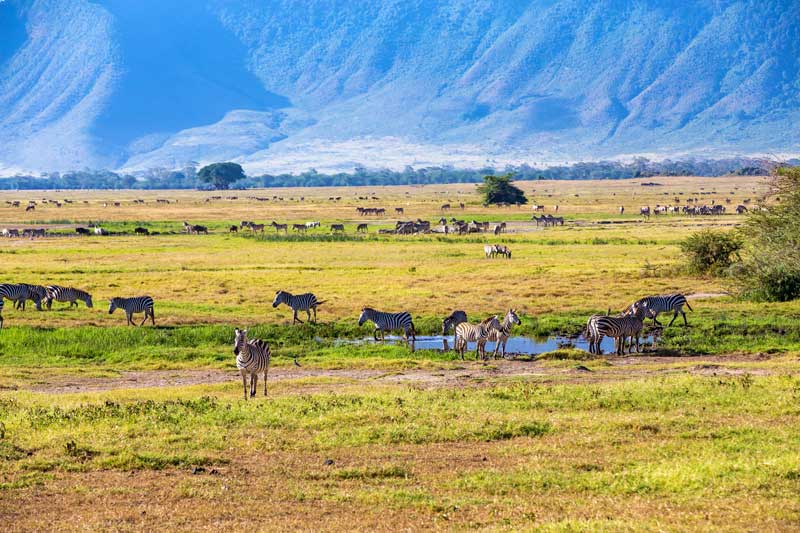
Ngorongoro Crater FAQs
Is Ngorongoro worth visiting?
Yes, Ngorongoro is definitely worth visiting. Located in Northern Tanzania, not far from the Serengeti National Park, the Ngorongoro Crater is the largest in tact volcanic caldera in the World.
Ngorongoro is an amazing destination for safaris. There are over 25,000 large animals in the crater including all of the Big 5.
Check out my Tanzania Safari Map for more info on epic safari locations.
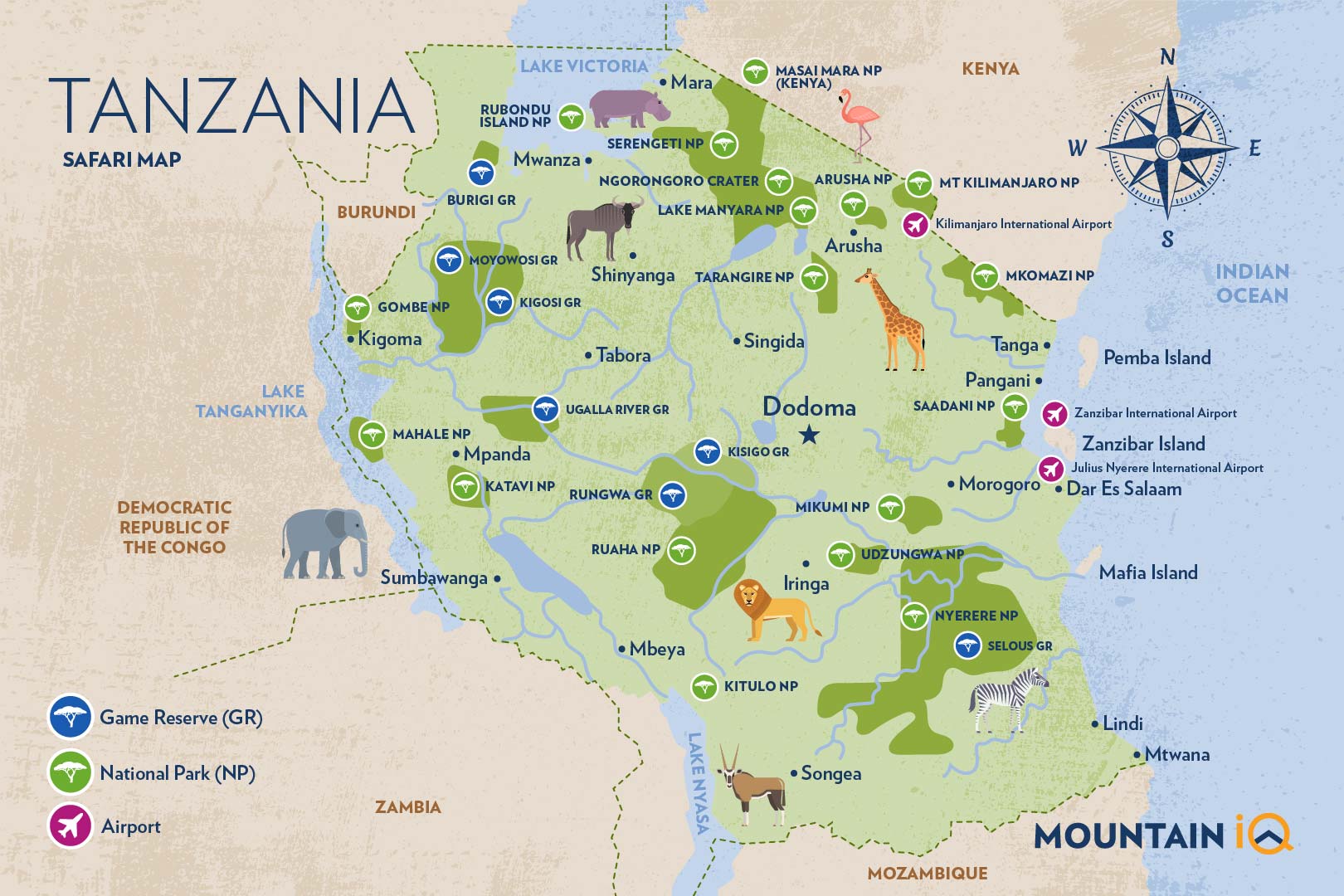
Ngorongoro Crater is situated in Ngorongoro Conservation Area in Northern Tanzania. It abuts the Serengeti National Park and is due west of Arusha.
What weather can I expect in the Ngorongoro Crater?
The Ngorongoro Conservation Area has a temperate climate.
A noticeable temperature drop takes place on the Crater’s rim as the altitude increases, so it’s important to prepare your safari clothing appropriately for cold early mornings and late evening safaris.
The greatest weather change is the vast contrast between the dry and wet seasons of the Crater.
Dry season
June-October: Average afternoon temperatures of around 19°C (66°F) on the crater floor. The morning and evenings are cold, especially on the crater rim where it can even freeze.
January-February: While it is difficult to pinpoint the exact months, there is usually a dry spell between the short and long rains during this time.
Wet Season
November-May: Usually warmer than the dry season with average afternoon temperatures around 23°C (73°F) on the crater floor. Mornings and evenings on the crater rim warm up slightly too with an average of 6°C (43°F).
The wet season has two types of rainy periods:
Short rains (November-December): This type of rainfall occurs in short bursts, usually as afternoon showers that rarely affect safaris.
Long rains (March-May): This marks the highest rainfall season, but it seldom rains throughout the whole day. This period may bring the occasional cold front.
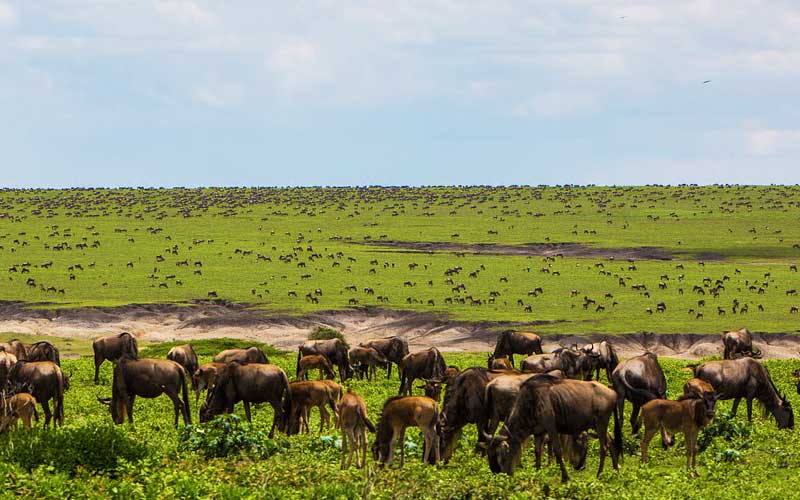
The greener, wetter months of November through May.
When is the best time to visit the Ngorongoro Crater?
June-October is considered the best time to visit Ngorongoro Crater. However, you’ll get a greener landscape and lesser crowds during wetter months of November till May.
Fortunately, the enclosed nature of the Crater makes wildlife viewings spectacular all year round.
The general high season of the Ngorongoro Crater takes place for most of the year from July until March.
While the dry season is generally regarded as the best time to visit the Ngorongoro Crater, each season comes with its pros and cons.
Dry season (June-October): Generally considered the best time of year to visit the Ngorongoro Crater. The grass is shorter, which makes wildlife easier to spot.
The predictable weather is also ideal for safaris. Another benefit to consider is a smaller malaria risk with fewer mosquitos during this time of year.
The downside of this season is undoubtedly the large crowds. The magical wildlife experience of the Ngorongoro Crater can be tainted by the reality of the sheer number of tourists and safari vehicles in the area.
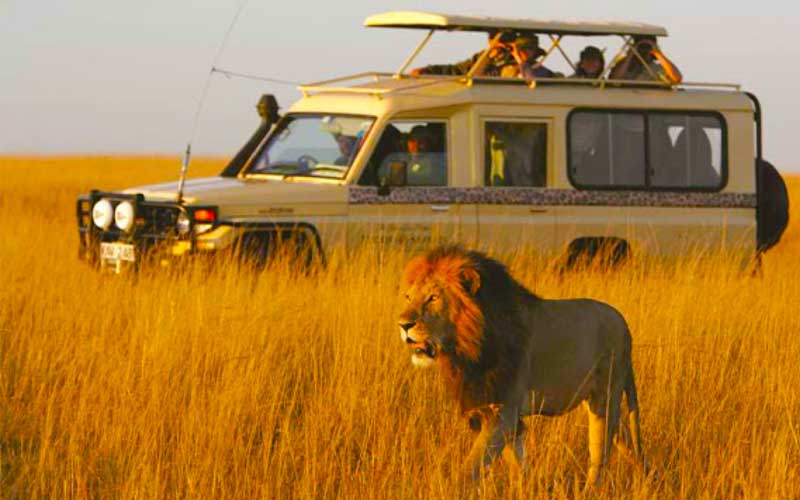
Plan your Safari experience
Check out these amazing deals on epic safari experiences now.
Wet season (November-May): The grass is longer during the wet season, which could make it more difficult to spot animals. Greater malaria precautions should also be taken during this time.
Spectacular scenery is a major perk of the wet season. The rains transform the Crater into a lush, green landscape. This is also the peak season for birdwatching as migratory birds make the Crater their seasonal home.
Higher water levels at Lake Magadi also draw more flamingos to the area.
Avoiding the overwhelming peak season crowds is another major bonus, resulting in off-season rates at certain lodges.
Safaris are not likely to be impacted by the short rainy season and can be timed around afternoon showers. The long rainy season, however, could have a greater impact on your trip.
What wildlife will I see in and around the Ngorongoro Crater?
The Ngorongoro Crater is home to some 25,000 large animals and is the most densely populated area of mammalian predators in Africa.
The enclosed caldera floor is rich in minerals and teeming with life, making it one of Africa’s top safari destinations.
Most of the Crater floor consists of open grasslands where the vast majority of wildlife can be spotted.
Other iconic areas in the Crater for wildlife sightings include:
- Lerai Forest
- Lake Magadi
- Gorigor Swamp
- Ngoitokitok Springs

Plan your Safari experience
Check out these amazing deals on epic safari experiences now.
Are the big five animals in the Ngorongoro Crater?
Yes, all of the big five animals - black rhino, elephant, buffalo, lion and leopard - are in the Ngorongoro Crater.
Moreover, the extraordinary compact area of the Ngorongoro Crater allows you to spot the Big Five animals all year round.
A resident population of endangered Black Rhino is one of the most highly sought-after sightings on the crater floor. The opportunity to encounter rare species has greatly impacted tourism in the area.
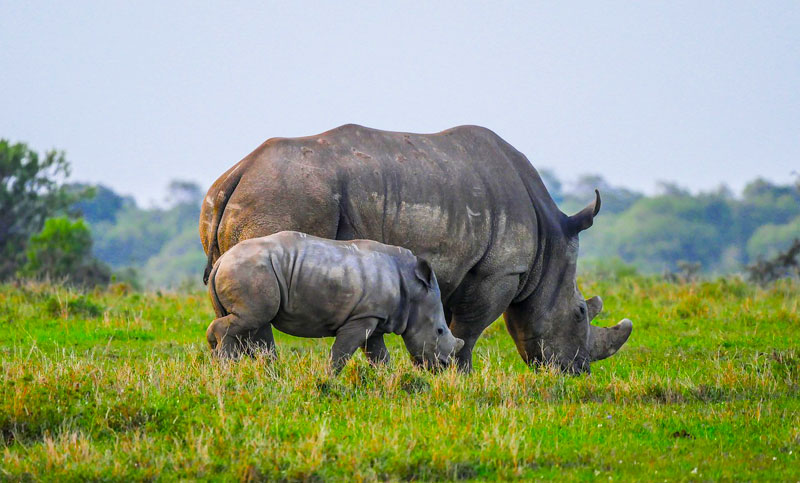
Black rhino with her baby
The crater floor is also home to old elephant bulls that boast some of Africa’s largest tusks. The giant creatures are often found flaunting their ivory tusks near the Lerai Forest. Breeding herds are spotted less frequently than the bulls and only pass through the crater occasionally.
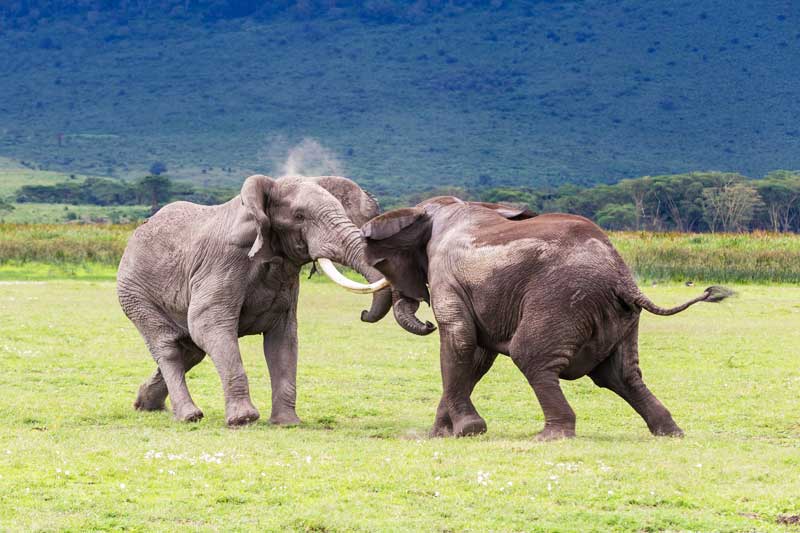
Elephant in Ngorongoro
A common sighting is large herds of buffalo, particularly in the dry season as they roam the grasslands in search of water. On the other hand, Leopards are far more difficult to find and tend to shy away from crowds of people.
As one of the most densely populated areas of lion in Africa, these predators are often spotted in the Ngorongoro Crater and are fairly comfortable around safari vehicles.
What other wildlife will I see in Ngorongoro?
With a variety of other animals ranging from hyena, jackal and cheetah, to roaming herds of wildebeest, zebra, Thomson’s and Grant’s gazelle – a safari in this area will always be action-packed.
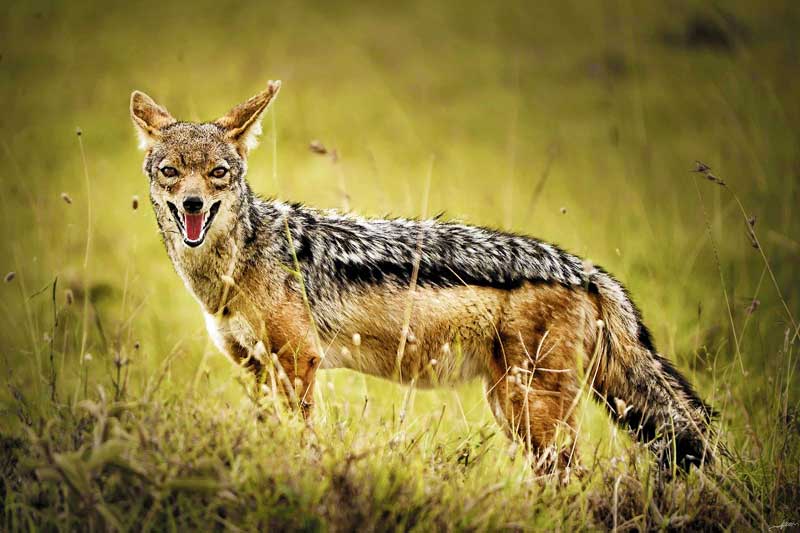
Jackal in Ngorongoro
The water-dense areas of the Crater make for exciting wildlife sightings too. The Ngoitokitok Springs and Gorigor Swamp, for example, are renowned for their pods of hippos.
Animals you won't see in Ngorongoro... the only animals you might want to scratch off your checklist are giraffes, impalas and crocodiles. While you may encounter these animals in the Ngorongoro Conservation Area, they are absent from the Crater.
What birdlife will I see in Ngorongoro?
Over 500 bird species are found within the Ngorongoro highlands and Crater.
In the middle of the crater is Lake Magadi, a shallow soda (sodium carbonate) lake that is home to large flocks of flamingos.
While migratory birds make the Crater their seasonal home from November till April, the Crater’s highland forests and grasslands have an abundance of resident birds.
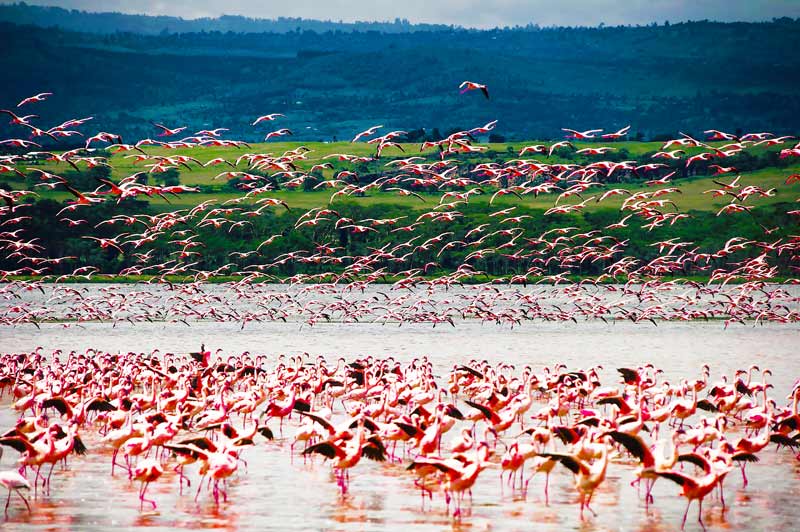
Flamingo on Lake Magadi
Common sightings include the Black kite, black-winged lapwing, Hildebrandt’s spurfowl, Kenya rufous sparrow and lesser flamingo.
What safari options are there for Ngorongoro Crater?
There are literally endless safari options for Ngorongoro.
Most safaris combine Ngorongoro with a safari in the Serengeti, and many also include safaris in Tarangire and Lake Manyara.
The cost of a safari in Ngorongoro is dependent on how many days you spend in the park, whether you go privately or in a small group, and most importantly the accommodation you choose (more on this below).
As a rough estimate, you can expect to pay $200 per person per day for a budget safari, $500 per person per day for a mid-range safari and upwards of $1500 per person per day for a luxury safari.
Read this guide on Tanzania safaris costs or check out my complete guide to Tanzania safaris.
Also see my top tips on getting a budget safari in Tanzania, going on a luxury Tanzanian safari and my review of the best Tanzania safari companies.
Which tour? Here are 5 Serengeti safari tours I highly recommend:
- Group Camping Safari that includes Tarangire and Ngorongoro (4 days)
- Budget Serengeti Safari (5 days)
- Scenic Northern Tanzania Safari (7 days)
- Serengeti Trail that includes Ngorongoro (8 days)
- Best of Kenya and Tanzania (incl. 6 national parks) (12 days)
See more Serengeti safari deals.
Where to Stay in the Ngorongoro Crater?
The best places to stay near the Ngorongoro Crater depend on your budget, which ultimately impacts your accessibility to the Crater and the cost of your entire safari experience.
There are two things two consider before you book your accommodation.
1. Most Convenient Crater Access and Best Views
For the ultimate Ngorongoro Crater experience, the best place to stay is on the Crater rim. Various lodges have been built on the rim that each offer spectacular views and the easiest access to the Crater.
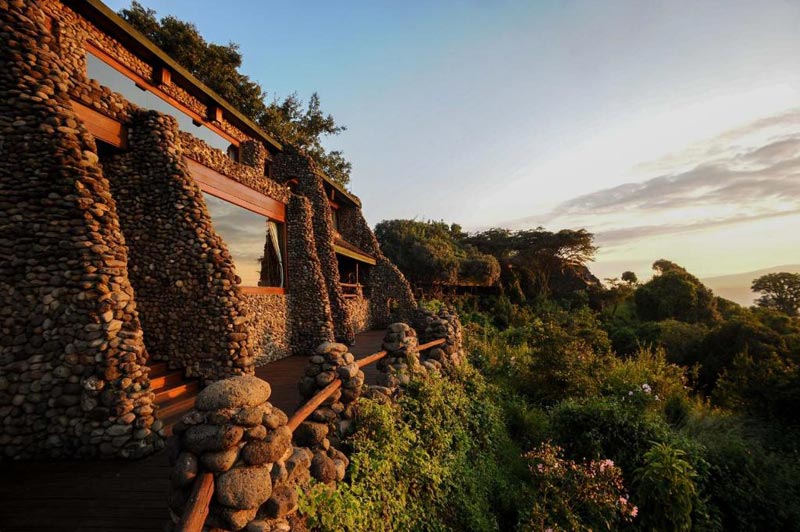
Ngorongoro Crater Serena Lodge
This will be the most expensive option, but there is a collection of lodges and camps with views of the Crater floor to choose from to suit your budget best.
Some of these include:
There are also lodges and camps in the rim valley of the Crater that do not necessarily overlook the grassland floor but also offer easy access to the Crater.
The Sanctuary Ngorongoro Crater Camp, for example, provides unrivalled road access into the crater.
Check hotel prices on Booking.com or Agoda.
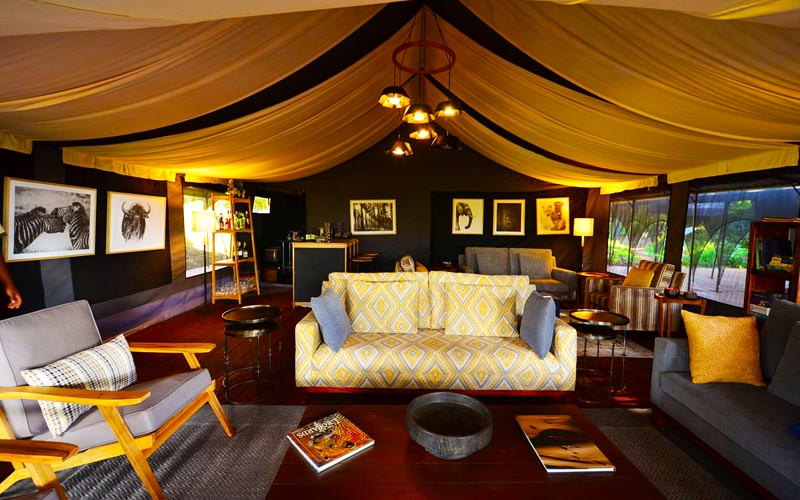
Sanctuary Ngorongoro Crater Camp Lounge
2. Budget-Friendly Options
For budget-friendly accommodation, it’s a good option to stay in the Rift Valley Escarpment – an area referred to as Karatu.
Only 20 km outside of the Crater, Karatu is set against the backdrop of scenic coffee plantations. The short, easy trip to the Crater from here could be worth the money saved.
Read more about Ngorongoro hotels or hotels in Tanzania.
What is the difference between the Serengeti and Ngorongoro?
At 14,763 square kilometres, the Serengeti is larger than Ngorongoro Conservation Area (8,292 square kilometres), and significantly larger than Ngorongoro Crater (264 square kilometres).
This means that Ngorongoro crater can be seen in a day or two, whereas you need a lot more time to appreciate the Serengeti.
The vegetation is also quite different. Ngorongoro crater consists mainly of grasslands, whereas the Serengeti has a diverse vegetation with areas of bushveld, forest and grassland plains.
Finally, although both the Ngorongoro and Serengeti have the Big 5, there are a lot more animals in the Serengeti.
Is there a good Ngorongoro map?
Yes, there is a good Ngorongoro map in Animals of the Serengeti: And Ngorongoro Conservation Area (Wildlife Explorer Guides). You can also check out my super-helpful Tanzania Safari Map.
How to Get to the Ngorongoro Crater?
In most cases, the Ngorongoro Conservation Area is the starting point of larger Northern Tanzania safari packages. There are several options for travellers making their way to the Crater specifically.
Fly to Arusha: A daily flight can be taken in a light aircraft to the town of Arusha from Julius Nyerere International Airport (DAR) or other airstrips.
It can then be organised that a guide / the lodge picks you up for the 3-4 hour drive to the Crater, depending on where you have booked to stay.
Fly to Kilimanjaro International Airport (JRO): This is a 46km/29mi trip from Arusha, where you can be picked up by a driver.
Fly to Manyara: The Manyara airstrip is an hour away from the Crater. Again, it can be organised that a guide / the lodge picks you up depending on where you have booked to stay.
Fly to the Serengeti first: Some tourists choose to fly to the Serengeti first and then slowly drive their way down to the Crater as part of a larger safari trip.

Plan your Safari experience
Check out these amazing deals on epic safari experiences now.
Ngorongoro Crater Facts
Here are some of my fascinating facts about the Ngorongoro crater.
Why is the Ngorongoro Crater Famous?
The Ngorongoro Crater is famous as it's the World's largest intact volcanic caldera. Covering a total area of 264 square km, the Ngorongoro Crater stretches between 16-19 km in diameter, and is about 600 meters deep.
How was the Ngorongoro Crater formed?
The Ngorongoro crater formed around 2.5 million years ago when an ancient volcanic cone collapsed after the loss of its underlying body of magma and ultimately formed what is now known as the largest inactive caldera on earth.
Where is Ngorongoro Crater?
The crater is located in Ngorongoro Conservation Area in Northern Tanzania. It is situated about 180 km from Arusha, and is not far from the Serengeti National Park on its Western side.
Is Ngorongoro one of the Seven Wonders of the World?
Ngorongoro is not one of the Seven Natural Wonders of the World, but many people refer to it as Africa's eighth wonder of the world.
What is Ngorongoro Conservation Area?
The crater was incorporated into the Ngorongoro Conservation Area in 1959 and was established as a multiple land-use area. In 1979, the area was declared a UNESCO World Heritage Site.
To allow traditional Maasai pastoralists to coexist with wildlife, the Ngorongoro Crater was not established as a national park but rather as a conservation area.
However, the recent implementation of certain conservation acts has placed restrictions on human settlement and pastoral practices within the crater.
My Final Thoughts
And there you have it: Now you know everything you need to know about the Ngorongoro Crater in Tanzania. Do you have some burning questions about this epic safari experience? Let me know in the comments. I'm always happy to help!

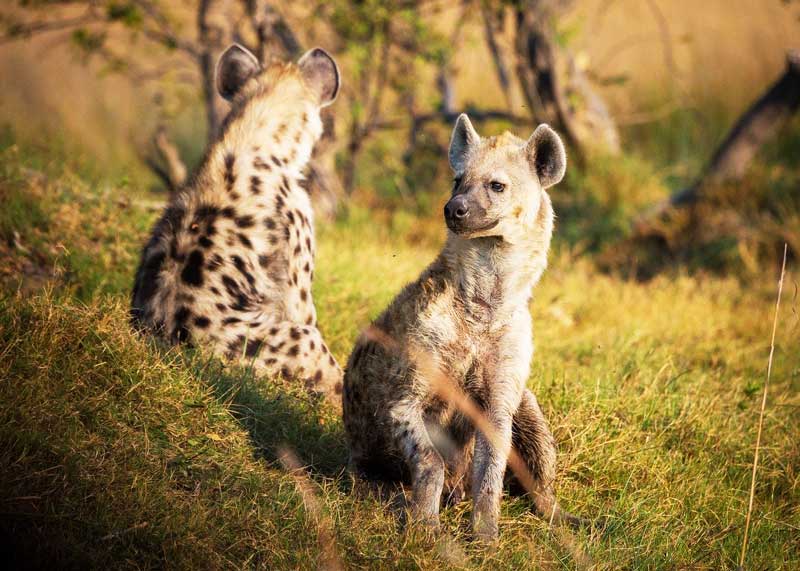
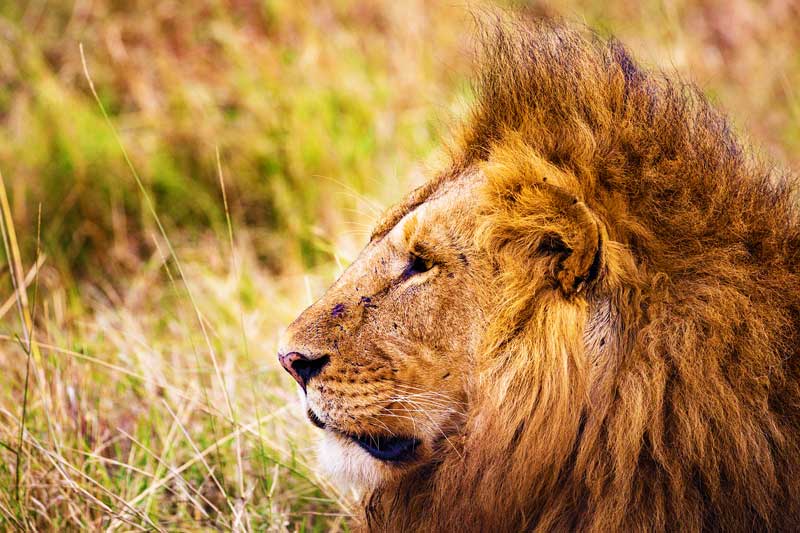
Ngorongoro Crater is a nice and wonderful area in the world due to the natural good population of wildlife being seen during tourism. Not only that but also people who are working under NCAA are very kind to host the tourist. Thank you! NCAA shall never die. My advice, NCAA is required to set the website automatically.